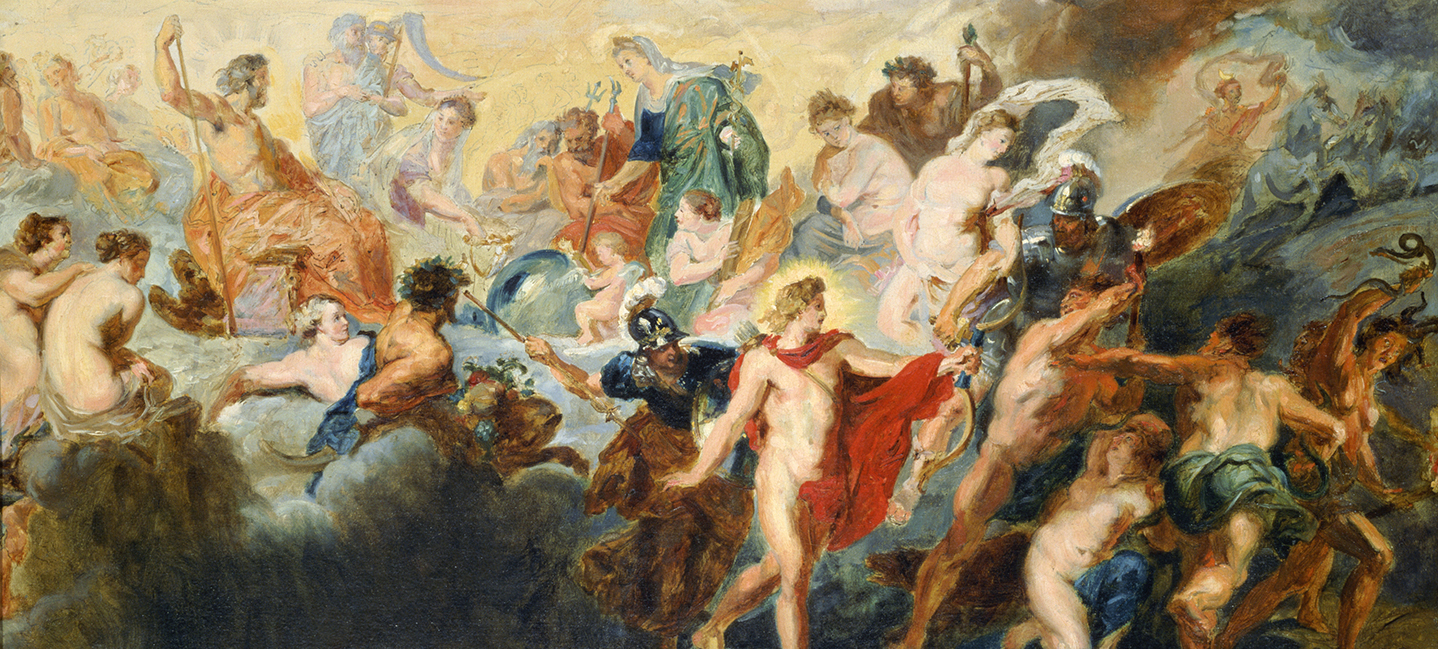
JUNE 8–SEPTEMBER 22, 2019
ABOUT THE EXHIBITION
Born in Limoges, France, on February 25, 1841, Pierre-Auguste Renoir was the sixth child of Léonard Renoir, a tailor, and Marguerite Merlet, a dressmaker. By May 1845 his family had moved to Paris, settling in a modest apartment in the shadow of the Musée du Louvre. Interested in the arts since childhood, he obtained an apprenticeship at the porcelain manufactory Lévy-Frères, where he decorated vases, saucers, and plates that were in high demand from a growing bourgeoisie. Renoir hungered, though, for more formal training and by 1861 had entered the renowned studio of Charles Gleyre, a Swiss painter who stressed the importance of accurately rendering human anatomy. Gleyre’s lessons held firm throughout Renoir’s long and prodigious career. From the late 1860s and early 1870s when he attempted to find fame at the Salon, through his Impressionist phase, and until his final years working steadfastly in the south of France, Renoir returned repeatedly, almost obsessively, to the subject of the body—clothed, certainly, but especially nude.
On the centenary of Renoir’s death, this exhibition provides new perspectives about the artist’s stylistic trajectory through the lens of a single subject. As his son Jean Renoir recounted, “He told me one day that he regretted not having painted the same picture—he meant the same subject—all his life. In that way, he would have been able to devote himself entirely to what constituted ‘creation’ in painting: the relations between form and color.” Renoir captured bustling scenes of the urban cityscape, members of fashionable society, and fleeting moments of atmospheric effects upon landscape, but his overarching preoccupation was the nude—an interest that was, at least in part, rooted in his desire to be considered alongside the great artists in history. “He told me,” noted his friend and fellow painter Berthe Morisot, “that for him the nude was one of the indispensable forms of art.” Not only was Renoir’s unique approach to figure painting a vital influence on the art of his time, but his many paintings, pastels, drawings, and sculptures would be championed by generations to follow
Renoir: The Body, The Senses is organized by the Clark Art Institute, Williamstown, Massachusetts, and the Kimbell Art Museum, Fort Worth, Texas. This exhibition is supported by an indemnity from the Federal Council on the Arts and the Humanities.
The Clark’s summer 2019 exhibitions and programs are made possible in part by generous support from Denise Littlefield Sobel. Major contributors to the presentation of Renoir: The Body, The Senses at the Clark are Robert and Martha Berman Lipp, Acquavella Galleries, and the Robert Lehman Foundation, with additional funding from two anonymous donors.

Offering the first-ever comprehensive investigation of Renoir’s nudes, Renoir: The Body, The Senses was published by the Clark Art Institute and edited by the exhibition’s curators, Esther Bell, Robert and Martha Berman Lipp Chief Curator of the Clark Art Institute, and George T. M. Shackelford, deputy director of the Kimbell Art Museum. This beautifully illustrated catalogue includes essays by Colin B. Bailey, Morgan Library & Museum; Martha Lucy, Barnes Foundation; Nicole R. Myers, Dallas Museum of Art; and Sylvie Patry, Musée d’Orsay; with an interview between contemporary figurative painter Lisa Yuskavage and Alison de Lima Greene, Museum of Fine Arts, Houston.
